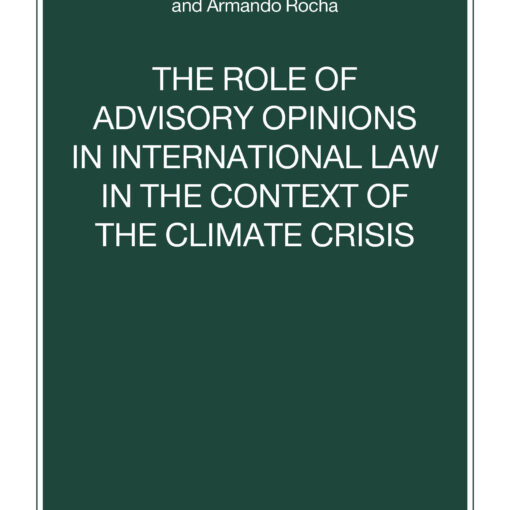After the initial buzz that follows a winning climate change case, it can be difficult to measure its real-life impact. Many have questioned whether public interest litigation in general, and climate cases in particular, can effect meaningful and lasting change. The answer is probably “it depends.” If launched at the right moment, with the right litigant and a strategic target, the results of litigation can be robust. One recent case from Australia — Bushfire Survivors for Climate Action Inc. v Environment Protection Authority – provides a good example. Handed down by the New South Wales Land and Environment Court in 2021, the judgment recently compelled New South Wales’ environment regulator – the Environment Protection Authority (EPA) – to release a debut Climate Change Policy and Plan that introduces tighter regulation of greenhouse gas emitters.
This is an example of a local community group using the law to speak to the government and being heard – an enviable result in the eyes of many climate litigators and litigants.
The Case
In 2019-2020, the ‘Black Summer’ bushfires ravaged New South Wales, fuelled by erratic and unpredictable weather conditions including drought and fire-generated thunderstorms. Tragic loss of life, property, biodiversity and livelihoods ensued.

As is often a collateral effect of terrible trauma, a group of bushfire survivors and firefighters came together with the goal of demanding action from the government to better protect New South Wales people from the escalating impacts of unabated climate change. They called themselves Bushfire Survivors for Climate Action Inc (Survivors).

The Survivors’ chosen tool – represented by the Environmental Defenders Office – was an order in the nature of mandamus compelling the EPA to perform a statutory duty to protect the environment from climate change. They had found that the EPA has an express duty imposed by s 9(1)(a) of the Protection of the Environment Administration Act 1991 (NSW) to “develop environmental quality objectives, guidelines and policies to ensure environment protection”. They used that hook to argue that climate change is a significant threat to the environment, and must, then, be encompassed in that duty.
The Land and Environment Court found that the duty in s 9(1)(a) does encompass protection of the environment from climate change and that the EPA had not fulfilled that duty. The Court ordered that the EPA be compelled to do so by developing targeted objectives, guidelines and policies (although not at the level of specificity that the Survivors had called for).
The Impact
In January 2023, 18 months after the court handed down its judgment, the EPA released its Climate Change Policy and Plan for 2023 – 2026 as a direct response to the Survivors’ legal intervention. The plan includes that the EPA will require pollution licence holders to demonstrate their contributions to the New South Wales emissions reduction target (70% of 2005 levels by 2035) via preparation of climate change mitigation and adaptation plans.
Emissions reduction targets will also be developed, specific to each industry sector, and best-practice guidelines created to support industry to reduce emissions. According to the EPA, the emissions reduction targets will eventually translate into hard emissions limits on licences. The EPA has committed to report annually on climate change impacts and adaptation, and on the progress of the Climate Change Policy and Plan implementation.
The Context: Why is it important to New South Wales?
The case and its result has been called “ground-breaking”. In a way, that description undersells the perfect ordinariness of the strategy that was its greatest strength. The Survivors’ case did not expose a new duty per se, such as in the renowned Urgenda Foundation v State of the Netherlands or the closer-to-home Sharma v Minister for the Environment, which was shortly thereafter overturned. Really, all the Survivors did was identify an existing statutory duty that was clearly intended by Parliament, and demand that the duty be exercised. As Matt Floro, Special Counsel at the Environmental Defenders Office states, “it was inconceivable to our client that EPA could fulfil its duty without addressing arguably the greatest environmental challenge, climate change.”
In other words, their idea was not particularly radical, nor should it rattle the Government’s sense of security and supremacy over the judiciary which is central to the Australian legal system. This is no criticism. Rather, it is the absence of jurisprudential sexiness that has meant the Survivors’ work has not been undone by a nervous parliament following the Land and Environment Court’s ruling. Instead, the case has resulted in incremental change that has tangibly improved climate change policy in the region and transmitted a clear market signal to emitters.
In a State where there is no legal avenue to challenge new fossil fuel projects on their merits, there are no human rights or environmental rights imbedded into legislation (compared to other states, such as Queensland, see Waratah Coal v Youth Verdict) and which boasts a major coal and gas industry, the Survivors and the Environmental Defenders Office found a niche which was both practical and effective in its context. That context included the State-wide trauma that resulted from the Black Summer bushfires, which certainly influenced the way this matter was understood by both the Court and the EPA in its response. As Mr Floro states:
the devastating Black Summer bushfires were the impetus for our client taking this case to the Court. Members of our client had direct experience of those bushfires and other dangerous fire events in New South Wales. Our client engaged former Australian Chief Scientist, Professor Penny Sackett, to present evidence to the Court about the effects of the Black Summer bushfires. Professor Sackett’s evidence about the magnitude of the climate crisis was accepted by the Court.
The timing of their legal argument, which related to climate change generally, also captured the historical moment. That was good advocacy. The legal system is one designed and wielded by humans, and such a construct must, as a matter of logic, reverberate with the events and sentiments of the time and place.
Conclusion
There is no silver bullet solution to the climate crisis within the law, or for that matter, in any other field of work. Nonetheless, the law can be a powerful, if flawed, tool that contributes to change making. The recently published EPA Climate Change and Policy Plan demonstrates that, when a community group uses their voices pointedly, and with a keen eye to their unique legal setting, they can effect lasting change that will tangibly (if modestly) bolster Australia’s emissions reduction efforts. That is a result to be commended and taken seriously amidst a global trend towards ever-more-inventive climate litigation. Jurisdictional quirks do not often permit successful copycat cases. But a lesson to be drawn from this one is to first work with the tools that you’ve got.
Author’s Note: This post was written on the unceded territory of the Turrbal people in Kurilpa, Meanjin. I pay my respects to the owners of the land on which I live and work. I recognise that the climate crisis was born from colonisation and has been resisted by First Nations since invasion. I acknowledge the role I play as a lawyer within a colonial legal system that has been and still is used as a tool of oppression, and that the biases inherent in that system must continually be challenged.

Bri Collins
Brianna Collins is the Sabin Center's rapporteur for Guiana, Latvia, and Nicaragua.




